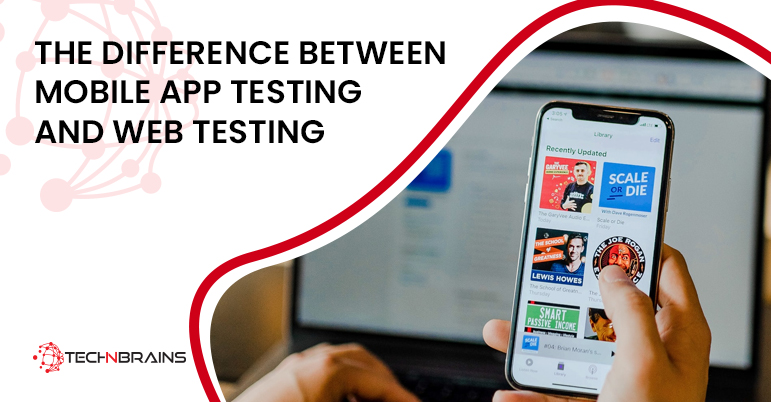In the software world, the concept of quality cannot be understood without extensive Testing, like any other industry. The concepts of quality assurance and quality control are important as well. Let’s learn more about them first, and then we will move towards the actual agenda of this article.
QUALITY ASSURANCE & QUALITY CONTROL
Quality Assurance (QA) and Quality Control (QC) are not new and have been around for quite a few years. Many confuse them for being the same terms with different words, but these are different. Let’s see what they mean.
Quality Assurance or QA refers to making the processes, procedures, and actions better and improved that are taken or followed to build, develop or manufacture a product. It deals with making the complete procedure efficient and effective with increased productivity.
Quality Control or QC means that after a product or a project has taken its final, finished shape, it is then checked for its performance and working and doing all that it is meant to. Quality Control is done after the building or development procedure is completed.
While both of these terms might seem confusing, these carry utmost importance in the testing world and are necessary to ensure top quality.
WHAT IS SOFTWARE TESTING?
Software Testing is a process, technique, or method through which a software, website, or mobile application is checked and examined against the initial project requirements and if it is fulfilling and completing the tasks that it is made for. This phase can sometimes be very lengthy and prolonged, depending upon the requirements and conditions.
In software Testing, the relevant individuals, usually QA Engineers or Software Testers, make sure the final product is completely bug or error-free and does not possess any irregular behavior. There are multiple types of software such as desktop, websites, mobile apps, and the tools and techniques to test them for appropriateness vary accordingly.
TYPES OF SOFTWARE TESTING
Although there are many software testing types, they can be divided into three main types.
- Non-Functional Testing has many different types which deal with the Testing of system’s performance, load management, compatibility, and the likes.
- Functional Testing refers to the tests done to make sure all the functions of the system work fine. It includes unit testing, user testing, smoke testing, and more.
- Regression & Maintenance Testing is done to ensure that system would not collapse in certain harsh conditions and is easy to maintain as well.
Since websites and mobile apps are both software, there are some common types of testing phases. For the initial stage, those who know how to make an app or a website must comply with all the basic testing standards.
MOBILE APP AND WEB TESTING – THE SIMILARITIES
There are multiple types of mobile applications and website technologies, but the testing process for both somehow remains the same, at least for the most part. Lets discuss the similarities between Mobile app and Web testing.
1) FUNCTIONAL TESTING
The primary focus of running functional tests is to determine whether or not all the functionalities of the system, either an app or the website, are running just fine. This includes the basic functioning of the app, pre-requisites, and USPs.
2) SECURITY TESTING
As evident from the name, this phase deals with all the security-relevant matters of the project or the product. It is made sure that all the loopholes are effectively managed, and shortcomings are looked after for improvements without compromising the quality.
3) USABILITY TESTING
Usability Testing incorporates everything that a user sees and deals directly with. It can include the fonts, the website or mobile app design, color selection, button and text sizes, smooth transition between the screens, and more.
4) COMPATIBILITY TESTING
This testing method ensures that all the development modules and components are compatible with the devices and platforms they will be used on. Such as for websites checking it on multiple, standard screen sizes and for mobile apps for respective platforms and against the audience preferences.
5) PERFORMANCE TESTING
Performance Testing, as the name suggests, is to ensure that the mobile application or the website is running perfectly and without any performance issues such as load and stress management, sustainability tests, and others.
MANUAL VS. AUTOMATED TESTING
Mobile app and Web testing is done in two ways: Manual Software Testing and Automated Software Testing. Nowadays, automated Testing is more widespread. There are many tools available that can help you perform a variety of tests. These tools make the testing process easier and more efficient. Still, manual tests are important, and many organizations test their software alongside automated tests.
WHAT ARE THE MAIN DIFFERENCES?
The design and platform differences between websites and mobile apps are apparent. As a result, the processes of going through each testing phase differ from one another. The tools available for testing both types of software are different too. Let’s quickly have a look at them.
WEB TESTING TOOLS
- Selenium
- HP UFT
- Apache JMeter
MOBILE TESTING TOOLS
The above tools are used to carry out a number of tests against the test cases along with manual Testing.
TAKEAWAY
The differences between mobile applications and websites in terms of testing parameters are not significant. However, the processes and tools used for testing each type vary. This means that diverse skillsets are required to effectively and successfully test the software.Automation tools reduce the testing times but require expertise for both mobile apps and websites.





